Renault Trafic Bus vs Toyota Proace City - Differences and prices compared
Costs and Efficiency:
Price and efficiency are key factors when choosing a car – and this is often where the real differences emerge.
Toyota Proace City has a decisively advantage in terms of price – it starts at 20800 £, while the Renault Trafic Bus costs 38200 £. That’s a price difference of around 17441 £.
Fuel consumption also shows a difference: Toyota Proace City manages with 5.30 L and is therefore clearly perceptible more efficient than the Renault Trafic Bus with 6.70 L. The difference is about 1.40 L per 100 km.
Engine and Performance:
Power, torque and acceleration say a lot about how a car feels on the road. This is where you see which model delivers more driving dynamics.
When it comes to engine power, the Renault Trafic Bus has a slightly edge – offering 170 HP compared to 136 HP. That’s roughly 34 HP more horsepower.
In acceleration from 0 to 100 km/h, the Renault Trafic Bus is slight quicker – completing the sprint in 10.60 s, while the Toyota Proace City takes 11.50 s. That’s about 0.90 s faster.
In terms of top speed, the Toyota Proace City performs minimal better – reaching 186 km/h, while the Renault Trafic Bus tops out at 180 km/h. The difference is around 6 km/h.
There’s also a difference in torque: Renault Trafic Bus pulls noticeable stronger with 380 Nm compared to 300 Nm. That’s about 80 Nm difference.
Space and Everyday Use:
Beyond pure performance, interior space and usability matter most in daily life. This is where you see which car is more practical and versatile.
Seats: Renault Trafic Bus offers clearly perceptible more seating capacity – 9 vs 7.
In curb weight, Toyota Proace City is significantly lighter – 1366 kg compared to 2031 kg. The difference is around 665 kg.
In maximum load capacity, the Renault Trafic Bus performs evident better – up to 4000 L, which is about 1307 L more than the Toyota Proace City.
When it comes to payload, Renault Trafic Bus a bit takes the win – 982 kg compared to 869 kg. That’s a difference of about 113 kg.
Who wins the race?
The Toyota Proace City proves to be leaves the rival little chance and therefore becomes our DriveDuel Champion!
Toyota Proace City is the better all-rounder in this comparison.
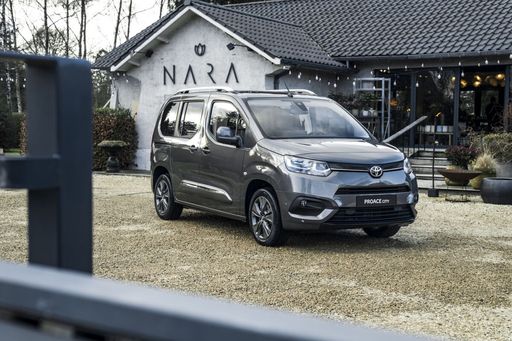 @ Toyota Motor Corporation
@ Toyota Motor Corporation
Toyota Proace City
Costs and Consumption
View detailed analysis
Engine and Performance
View detailed analysis
Dimensions and Body
View detailed analysis
Renault Trafic Bus
The Renault Trafic is a practical people-carrier that prefers sensible space and smart flexibility to showroom gloss, making it a top pick for families, shuttle operators or anyone ferrying a crowd without fuss. It’s comfortable, economical in everyday running and blessedly uncomplicated — not the most glamorous vehicle, but brilliantly dependable when you need it to be.
detailsToyota Proace City
The Toyota Proace City is a clever compact workhorse that blends van practicality with passenger comfort, turning daily deliveries or weekend DIY runs into a surprisingly civilised affair. It won't set your pulse racing, but its easy driving manners, flexible interior and low-hassle ownership make it a smart pick for buyers who value usefulness over flash.
details @ Toyota Motor Corporation
@ Toyota Motor Corporation
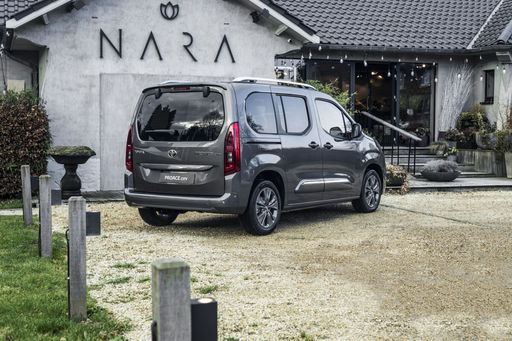 @ Toyota Motor Corporation
@ Toyota Motor Corporation
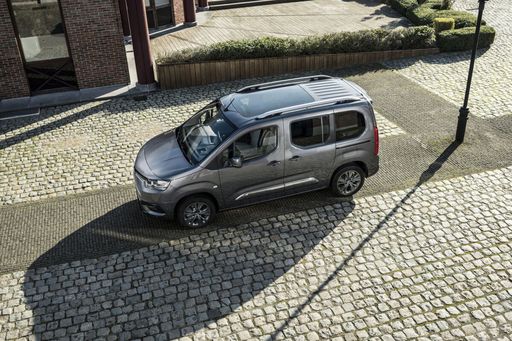 @ Toyota Motor Corporation
@ Toyota Motor Corporation
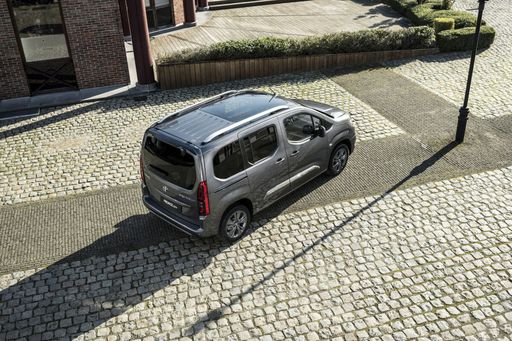 @ Toyota Motor Corporation
@ Toyota Motor Corporation
 @ Toyota Motor Corporation
@ Toyota Motor Corporation
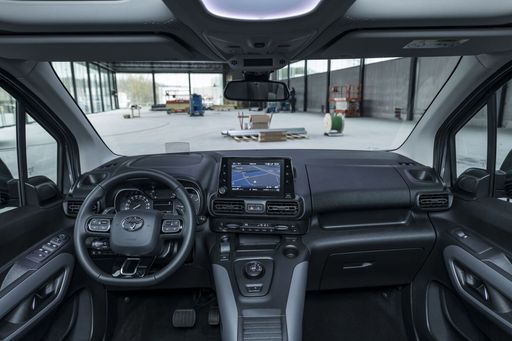 @ Toyota Motor Corporation
@ Toyota Motor Corporation
 @ Toyota Motor Corporation
@ Toyota Motor Corporation
|
|
|
|
|
Costs and Consumption |
|
|---|---|
|
Price
38200 - 54400 £
|
Price
20800 - 44100 £
|
|
Consumption L/100km
6.7 - 7.2 L
|
Consumption L/100km
5.3 - 6.3 L
|
|
Consumption kWh/100km
-
|
Consumption kWh/100km
18.10 kWh
|
|
Electric Range
-
|
Electric Range
343 km
|
|
Battery Capacity
-
|
Battery Capacity
-
|
|
co2
175 - 189 g/km
|
co2
0 - 146 g/km
|
|
Fuel tank capacity
80 L
|
Fuel tank capacity
50 - 61 L
|
Dimensions and Body |
|
|---|---|
|
Body Type
Bus
|
Body Type
High Roof Estate
|
|
Seats
8 - 9
|
Seats
5 - 7
|
|
Doors
4
|
Doors
4 - 5
|
|
Curb weight
2031 - 2352 kg
|
Curb weight
1366 - 1664 kg
|
|
Trunk capacity
-
|
Trunk capacity
322 - 912 L
|
|
Length
5080 - 5480 mm
|
Length
4401 - 4751 mm
|
|
Width
1956 mm
|
Width
1848 mm
|
|
Height
1973 - 1974 mm
|
Height
1812 - 1818 mm
|
|
Max trunk capacity
3200 - 4000 L
|
Max trunk capacity
2126 - 2693 L
|
|
Payload
718 - 982 kg
|
Payload
525 - 869 kg
|
Engine and Performance |
|
|---|---|
|
Engine Type
Diesel
|
Engine Type
Petrol, Diesel, Electric
|
|
Transmission
Manuel, Automatic
|
Transmission
Manuel, Automatic
|
|
Transmission Detail
Manual Gearbox, Automatic Gearbox
|
Transmission Detail
Manual Gearbox, Reduction Gearbox, Automatic Gearbox
|
|
Drive Type
Front-Wheel Drive
|
Drive Type
Front-Wheel Drive
|
|
Power HP
110 - 170 HP
|
Power HP
102 - 136 HP
|
|
Acceleration 0-100km/h
10.6 - 16.5 s
|
Acceleration 0-100km/h
11.5 - 13.2 s
|
|
Max Speed
161 - 180 km/h
|
Max Speed
135 - 186 km/h
|
|
Torque
300 - 380 Nm
|
Torque
205 - 300 Nm
|
|
Number of Cylinders
4
|
Number of Cylinders
3 - 4
|
|
Power kW
81 - 125 kW
|
Power kW
75 - 100 kW
|
|
Engine capacity
1997 cm3
|
Engine capacity
1199 - 1499 cm3
|
General |
|
|---|---|
|
Model Year
2023 - 2025
|
Model Year
2024 - 2025
|
|
CO2 Efficiency Class
G, F
|
CO2 Efficiency Class
E, A
|
|
Brand
Renault
|
Brand
Toyota
|
What drive types are available for the Renault Trafic Bus?
The Renault Trafic Bus is offered with Front-Wheel Drive.
The prices and data displayed are estimates based on German list prices and may vary by country. This information is not legally binding.
